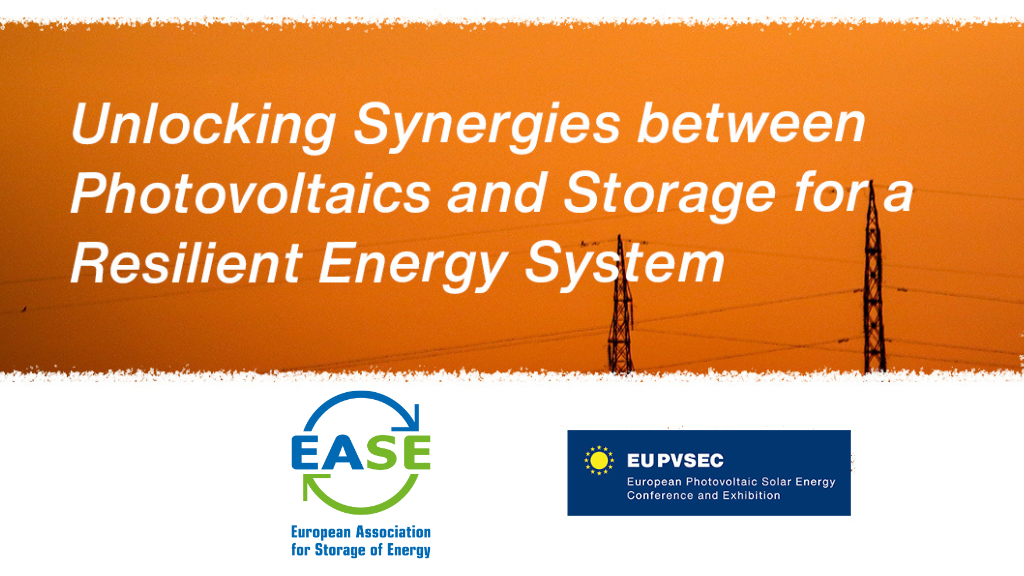14.07.2021 / Press Releases
Fit for 55: a Valuable Opportunity to Support Energy Storage Deployment
14 July 2021: EASE welcomes the publication of the EU’s ‘Fit for 55’ Package: 13 legislative proposals aimed at accelerating efforts to meet the EU’s target of 55% greenhouse gas emissions reductions by 2030 and net-zero emissions by 2050.
“Fit for 55 is a prime opportunity to build on the ‘Clean Energy Package’ with respect to supporting energy storage deployment,” said EASE Secretary General Patrick Clerens. “We need more ambitious policies that put energy storage front and centre in the EU’s decarbonisation strategy – Fit for 55 can help us achieve this.”
In particular, EASE supports that the revised Renewable Energy Directive (RED III) increases the overall Union target for renewable energy in 2030 to 40%. The RED III proposals, however, fall short in terms of supporting energy storage deployment to facilitate renewable energy sources (RES) integration. This is a mistake because focusing only on deploying more RES is insufficient; RES need to be integrated effectively into the system and their use in the heating and cooling, mobility, and industry sectors must be maximised.
We therefore call on EU policymakers to expand RED III to include a comprehensive methodology to assess flexibility needs, which could be used to define an energy storage target to support the cost-effective integration of RES. Moreover, we ask for RED III to address barriers to deployment of hybrid RES + storage projects, simplify and speed up administrative procedures and permitting for energy storage facilities, and ramp up support for thermal storage.
EASE also welcomes as part of ‘Fit for 55’ the revised Energy Taxation Directive, which addresses avoiding the risk of double taxation for energy storage devices.
Energy storage solutions play a key role in the mobility sector. In this sense, EASE welcomes the introduction of binding targets in the Alternative Fuels Infrastructure Regulation and the decision to rely on a Regulation instead of Directive. Although it’s unclear if it imposes sufficiently stringent recharging infrastructure deployment targets, the proposal goes in the right direction. Still, energy storage role in allowing and supporting the deployment of recharging infrastructure should be further discussed in the Regulation.
EASE also welcomes stronger CO2 standards for EU mobility in the Amendment of the Regulation setting CO2 emission standards for cars and vans: new emerging means of transportation, mainly BEVs, FCEVs, and vehicles relying on synthetic fuels, play a key role in decarbonisation and sector integration.
Besides, on the topic of REFuelEU and FuelEU, EASE appreciates the European Commission decision to support renewable fuels of non-biological origin (RFNBOs) and investigate green hydrogen and electricity solution. Energy storage systems - e.g. through Power-to-Gas, Power-to-Liquid, battery solutions - can to sustain the supply of aviation and maritime fuels.
Particularly important for the energy storage sector are the Emission Trading System (ETS) and Carbon Border Adjustment Mechanism (CBAM) dossiers. The European Commission’s decision to add aviation and shipping emissions under the ETS scope may be positive from the energy storage sector point of view. In fact, energy storage provides a wide array of solutions to decarbonise both these sectors.
The CBAM is a complex topic with significant implications - it must be properly designed to ensure the achievement of the EU decarbonisation targets and a level-playing field between European and non-European products. EASE welcomes that the EU Commission is considering the inclusion of imported hydrogen under the CBAM-covered sectors: it is key to move forward in this direction to avoid carbon leakage.




